A relaxing mini break just a short hop from London
The historic city of St Albans is situated in the home county of Hertfordshire and is the perfect location for a cultural mini-break or even a relaxing day out from central London.
Slip on your comfy shoes and unwind as you meander around St Albans’s ancient streets and attractive lanes and discover its captivating charm.
St Albans is a delightful city to visit throughout the year and a joy to explore, particularly around the Cathedral Close and Romeland.
The Cathedral city of St Albans is easily navigated on foot, with many of its historic sights and landmarks just a short stroll from its welcoming Market Place.
So, let’s head off and wander in the footsteps of the Romans around the streets of St Albans.
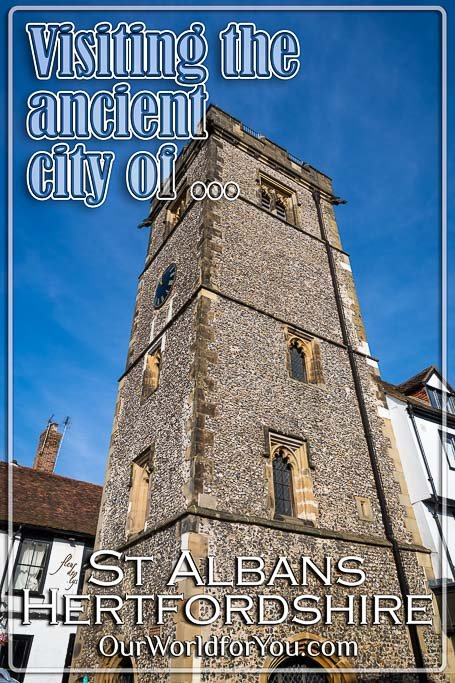
Where is St Albans?
How to get to St Albans
- By Train
St Albans City station is only 20 minutes from London’s St Pancras Intl station on the Thameslink train line.
- By Coach
You can travel to St Albans via National Express coaches, which offers a direct service from London and other UK locations.
- By Car
The main motorway routes into St. Albans are the M1 (jct. 6), A1(M) and the M25 (jct’s. 21A and 22).
- By Air
The closest airports to St. Albans are London Luton and Gatwick, which are linked to St. Albans on the Bedford-Brighton rail route. Or hire a car from these airports from Rental Cars.
A brief history of St Albans
A city full of rich heritage
By AD 50 the Roman city of Verulamium had become the second-largest Roman settlement in Roman Britain after Londinium. However, Queen Boudicca was not happy with the growth of the Roman town of Verulamium, and in AD 60, she ordered for the city to be burnt to the ground.
Remains of the Roman settlement can still be seen in St Albans, including the city walls and a stunning mosaic in Verlamium Park. The city began to grow again through the centuries, and the Roman occupation ended around AD 450.
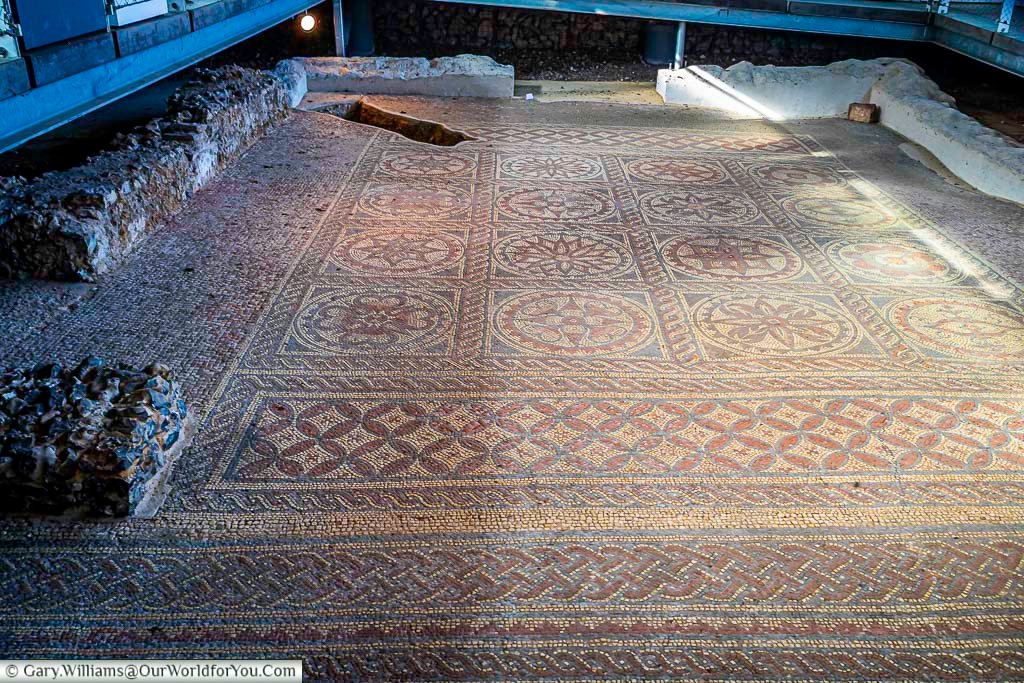
The present-day name of St Albans is derived from the British saint Alban, who is believed to be the first-recorded British saint. Alban, a citizen of Verulamium, was martyred for his Christian faith in circa AD 250 near the hilltop site of St Albans Cathedral. St Alban is now enshrined within St Albans Cathedral.
In AD 793, St Albans Benedictine Abbey was founded by King Offa of Mercia, and the town of St Albans gradually grew up around the Abbey. St Albans was the first major town on the old Roman road of Watling Street. This 276-mile road runs from Dover to London through St Albans to its final destination in Wroxeter in Shropshire.
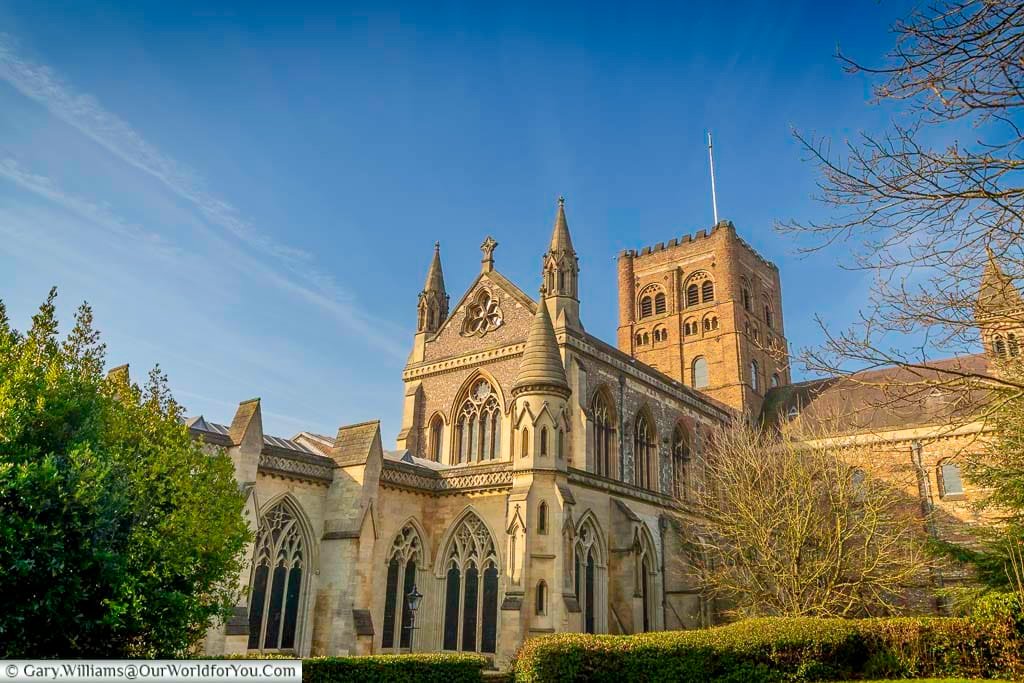
Stay informed
Exploring the city of St Albans
Strolling its ancient streets
St Albans is a relatively easy city to explore on foot. We started our self-guided walking tour of St Albans from St Peter’s Street at the St Albans Museum + Gallery. This delightful museum is in the Georgian Grade II* listed Town Hall and is free to visit. It is full of exhibits from local and national history and contemporary art.
Within the museum, you will find the Town Hall’s Assembly Room and cells to visit, and you can also enjoy a coffee and cake within the restored Georgian Courtroom.
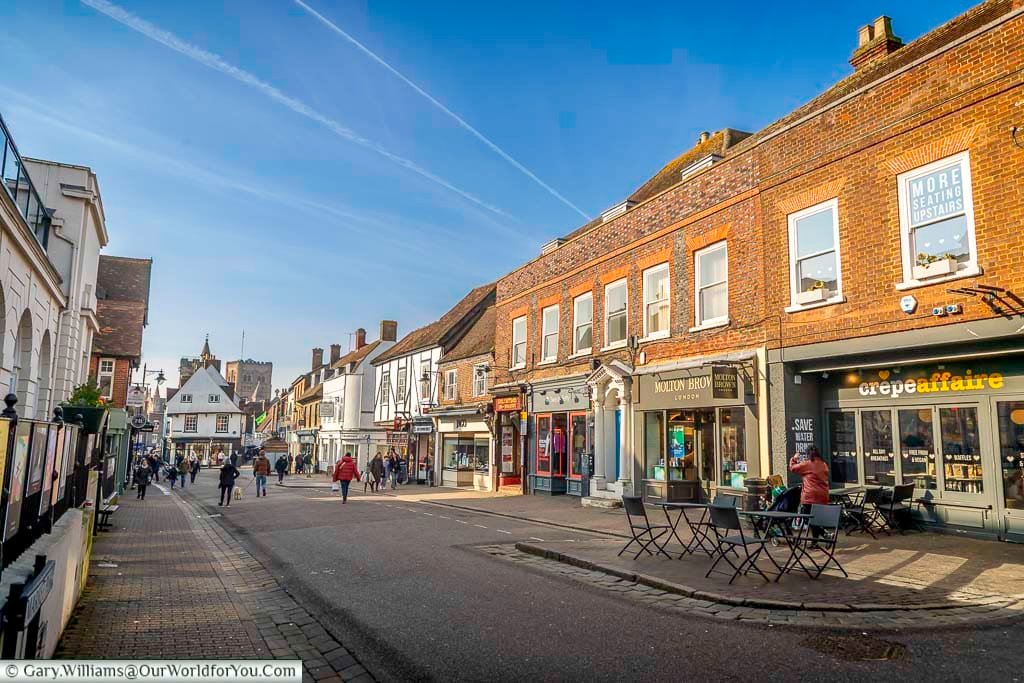
Just in front of St Albans old Town Hall is where the weekly street market is held on Wednesdays and Saturdays. A bustling market has been located in the heart of St Albans since 860.
A short stroll to the right of the Town Hall is Market Place and French Row. These lovely streets are filled with stunning architecture and charming shops. On the left, heading down Market Place, you’ll spot the old Corn Exchange built in 1857, which replaced the Market Hall erected around 1596.
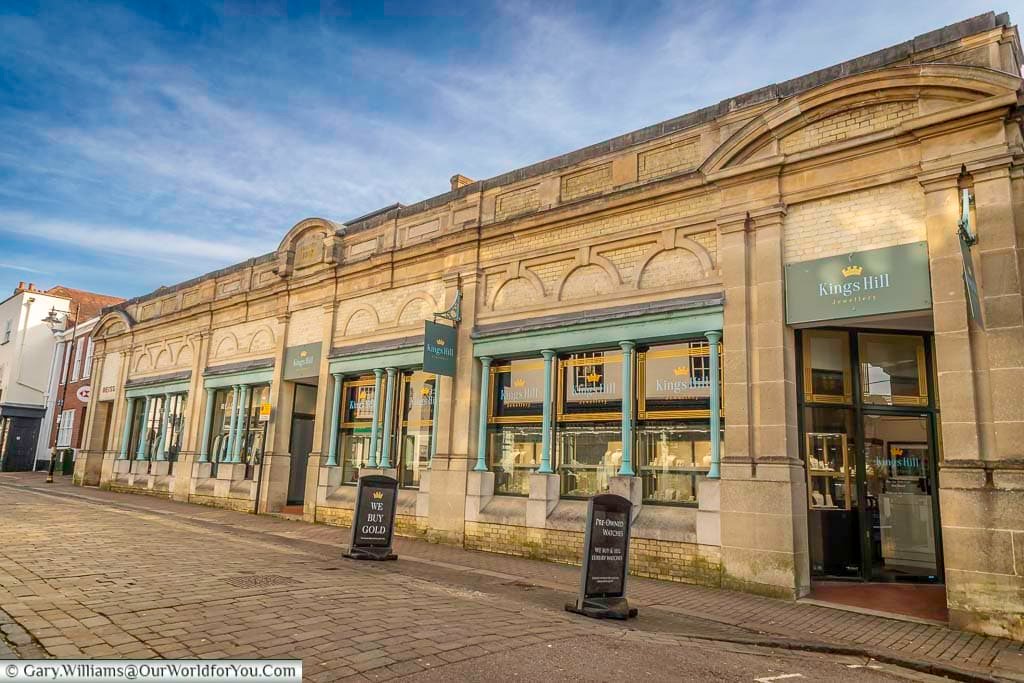
Continuing down Market Place, you’ll undoubtedly see St Albans’s ancient Clock Tower, which was built in 1405 and is the only medieval town belfry in England. The tower, with its historic bell, has survived over 600 years of use.
The local people of St Albans used the Bell Tower to exert their freedom against the power of the Benedictine Abbey of England, now St Albans Cathedral.

The Belfry allowed the town to regulate its own hours until 1863. The bell was also used to alert the town in case of fire or affray. The bell rang out for the first Battle of St Albans during the Wars of the Roses in 1455.
You can climb the 93 narrow winding steps to the top of the tower to enjoy a magnificent view across St Albans city skyline. The Bell Tower is open from Easter through to the end of September and has restricted access.
Where to stay in St Albans
This historic city centre hotel is a 600-year-old coaching inn in the heart of St Albans opposite the cathedral and abbey.
Free private onsite parking is available.
Is a clean and friendly hotel located around three miles outside St Albans historic centre and just a short hop from the M25.
Private onsite parking is available free of charge; they also have EV charging facilities.
Visiting St Albans Cathedral
The Abbey’s ancient Gateway
Fast forward 500 years, and King Henry VIII announced the Dissolution of the Monasteries. The grand Abbey of St Alban was dissolved on 5th December 1539. It wasn’t until St Alban’s was granted city status in 1877 that the Abbey Church of St Albans was declared a Cathedral.
As you stroll around the church, you’ll notice that a considerable amount of St Albans Cathedral architecture dates from Norman times; additional elements of Romanesque and Gothic styles were added through the centuries.
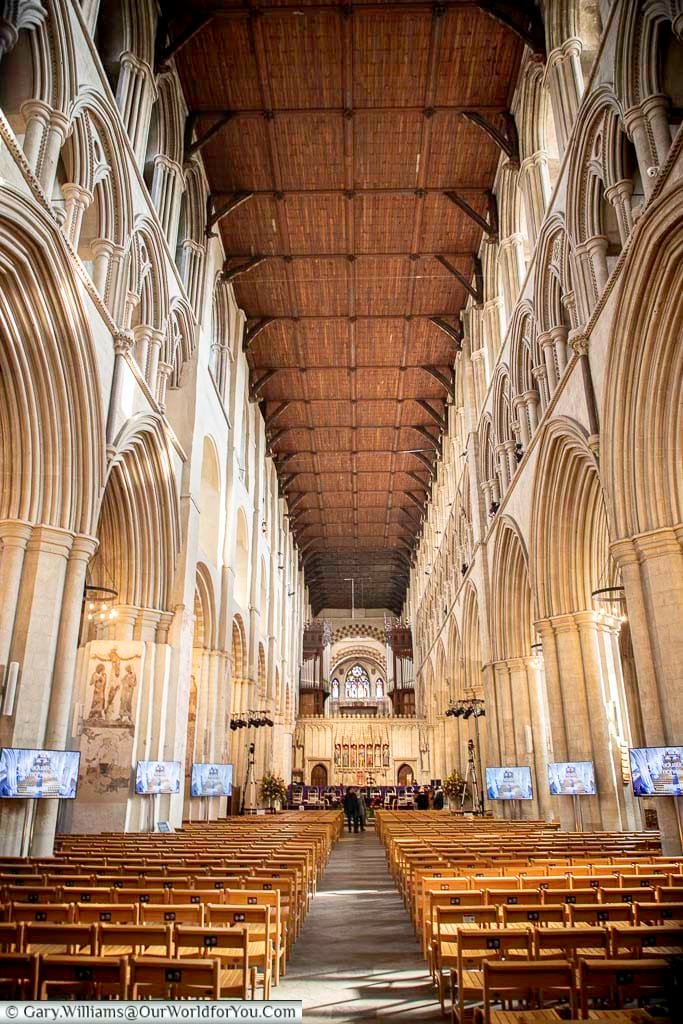

The Nave in St Albans Cathedral is incredible, and it can boast to be the longest Nave in the country, at 85 metres long. The vast pillars that line the Nave are decorated with beautiful medieval wall paintings.
One of the sights not to be missed within the cathedral is the Shrine of St Alban, who, as I mentioned, is believed to be the first-recorded British saint. The shrine of St Alban is a significant site of national pilgrimage and has been a central point for visitors and pilgrims for over 1700 years.
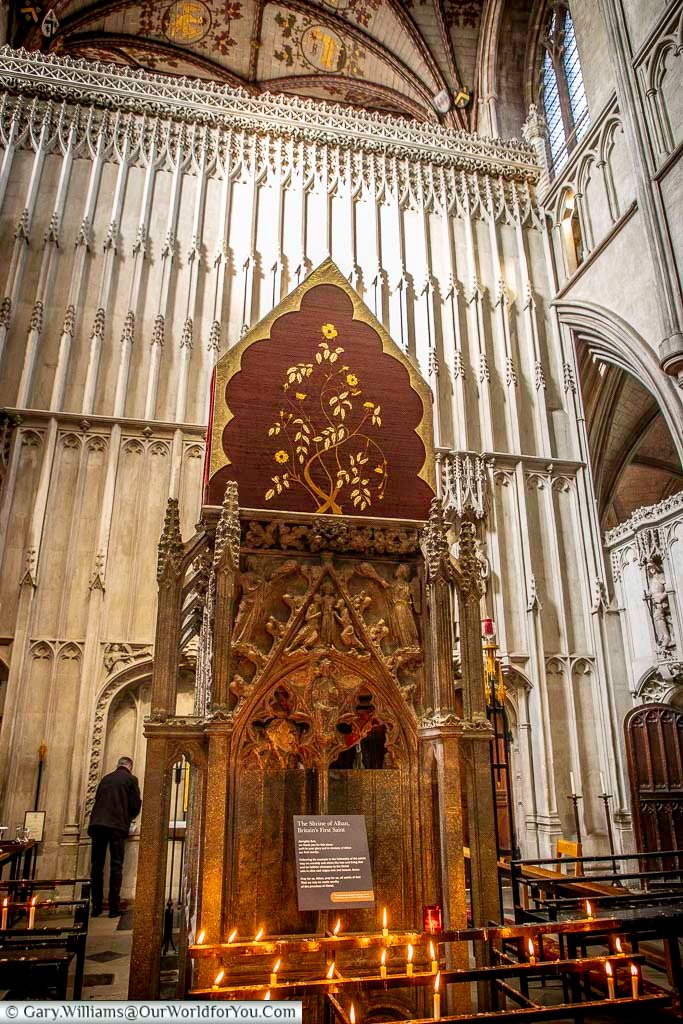

Wandering around, you’ll see some stunning stained-glass windows throughout the cathedral; however, one in particular that’s amazing is the Rose Window. The vibrant design you see today was added in 1989, replacing an earlier Victorian plain glass window.
St Albans Cathedral is a lovely church to stroll around in, and it has many aspects that will catch your eye. The Quire is a must-see, along with the Wallingford High Altar screen; the screen has such incredible detail and a statue of a saint in every cove. The original screen was circa 1480; the saint statues are Victorian, and the originals were destroyed during the Dissolution of the Monasteries.


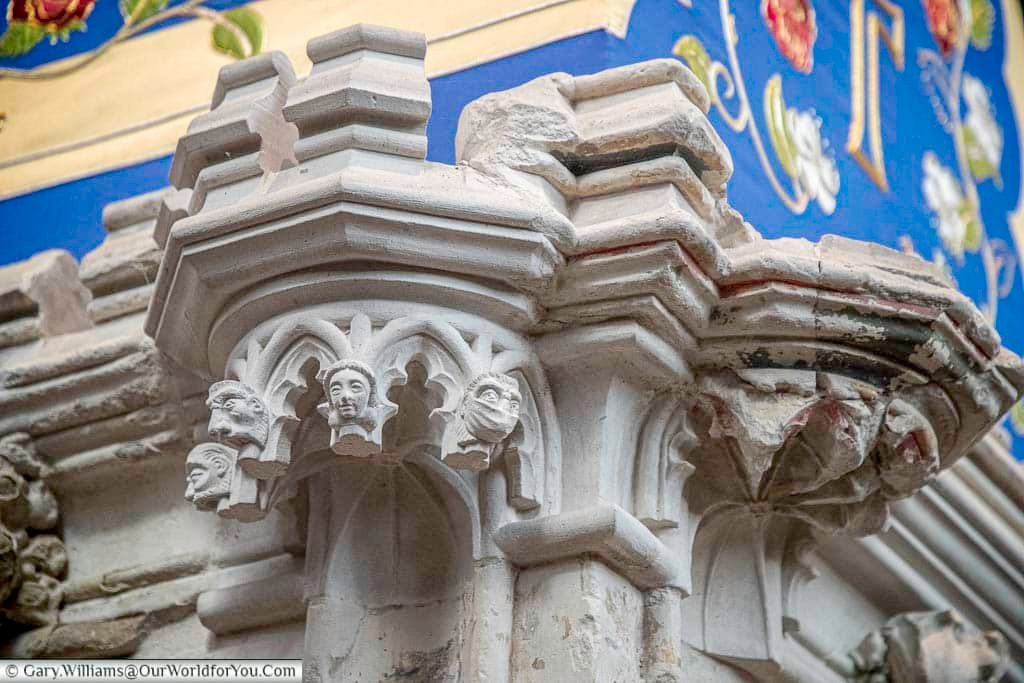
It’s a good idea to chat with the volunteers at the cathedral as they have some fantastic knowledge and will show you hidden details of the church that you may otherwise miss. A lovely lady in the cathedral showed us a piece of ancient graffiti, a dancing skeleton and a tiny carving added to the Shrine of St Amphibalus when it was restored in 2020. You can spot the modern-day addition; the little head carving has a face mask, a reminder of COVID-19.
Keep an eye out for the Peregrine Falcons nesting in St Albans Cathedral, or you can catch them on the Peregrine Live Cam.
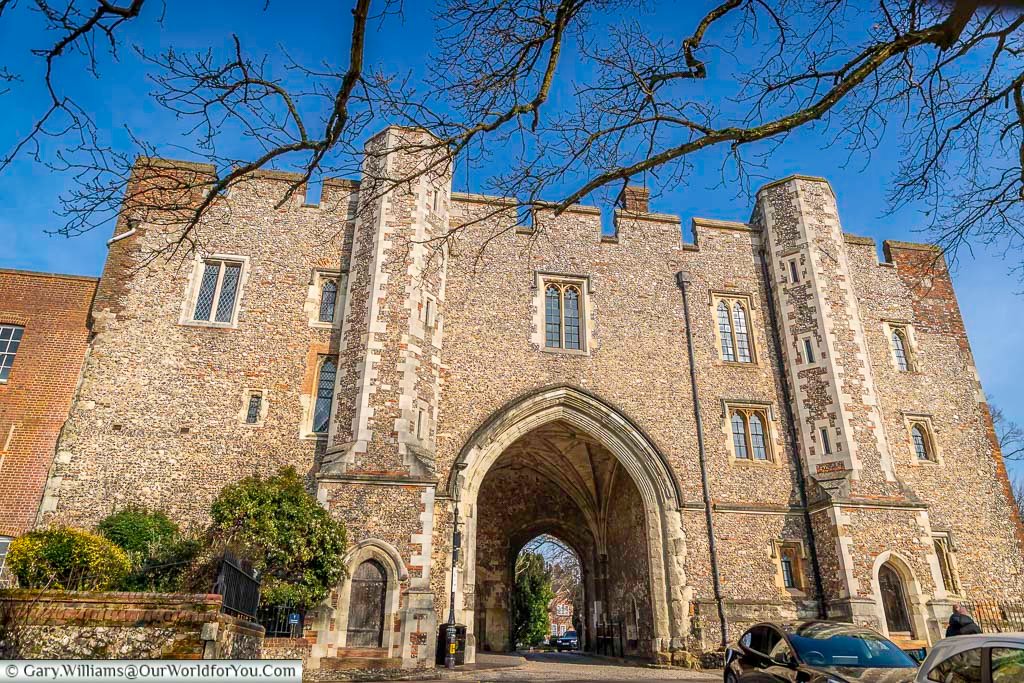
Stepping outside of St Albans Cathedral, you’ll see the spectacular Abbey Gateway. Abbey Gateway and St Albans Abbey are the only remaining structures which formed part of the old Benedictine Monastery.
Abbey Gateway was built in 1365 and was besieged during the Peasants’ Revolt in 1381; it was used as a prison following the dissolution of the Abbey in 1539. From 1871 to the present day, the Gateway became part of St Albans School.
The school has had many famous former students, including Nicholas Breakspear, who became Pope Adrian IV, the only English Pope and the renowned Physicists and Cosmologist Professor Stephen Hawking.
St Albans Tourist Information
Uncovering St Albans history
The Romans left their mark

Verlamium Park is named after the aforementioned Roman City of Verulamium, on which it stands; here, you can see the remains of the ancient City walls and the outline of the London Gate.
You must include a stop at the Roman Mosaic and Hypocaust, which are free to visit. The stunning Roman mosaic is part of a suite of rooms in a large townhouse built around AD 200. The mosaic floor and hypocaust were uncovered during the excavation of Verlamium Park and left in situ. The 1800-year-old hypocaust displays one of the first heating systems in the country.

Our video of St Albans
We have created a little YouTube video of St Albans. Why not take a look?
Also, why not subscribe to our YouTube channel and get the latest clips as we post them?
Discovering more of St Albans
A picture house and an alehouse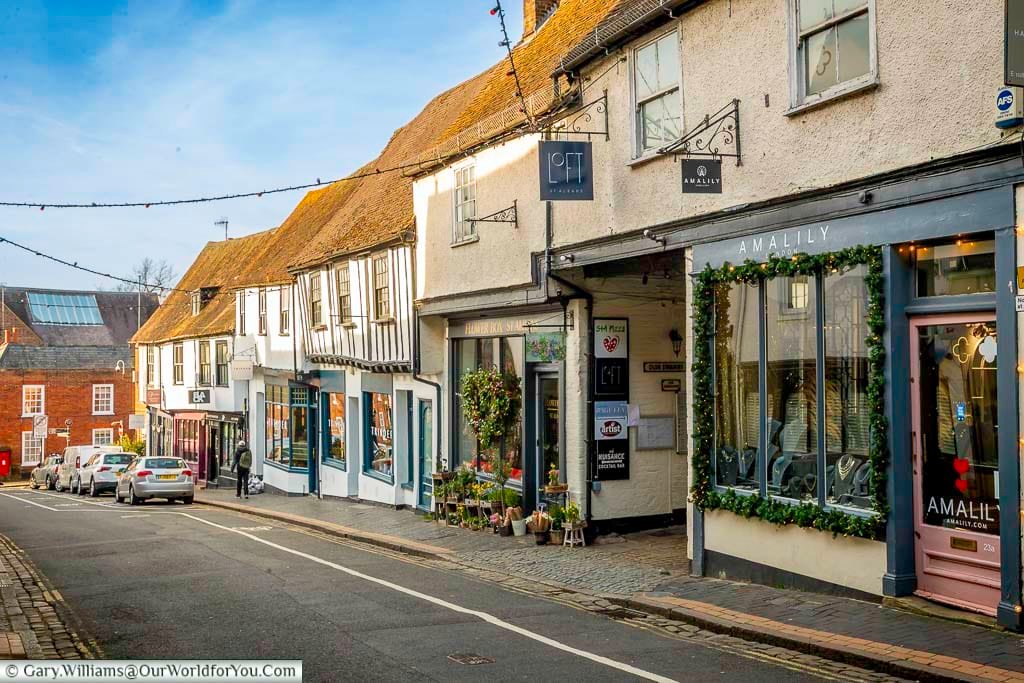

Strolling down London Road, we spot the beautifully restored Art Deco Odyssey Cinema. This independent arthouse cinema stands on the sight of Hertfordshire's first cinema, the Alpha Picture Palace, which was opened in 1908 by film-making pioneer Arthur Melbourne-Cooper.
The cinema has had a few name changes over the decades and was formerly named the Poly Picture Palace, The Regent, the Capitol, to the Odeon in the 70s.


Escape for a few days
Are you in search of a tranquil hideaway to relax and unwind in, while you discover the beautiful British countryside?
Browse through the handpicked properties and unique retreats at Holiday Cottages.
* This post may contain links to affiliated sites where we earn a small commission at no additional charge to you.
